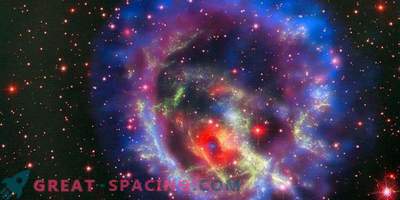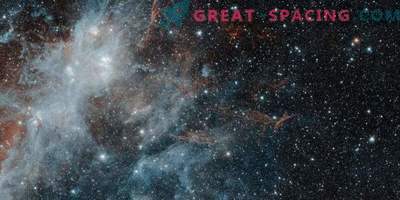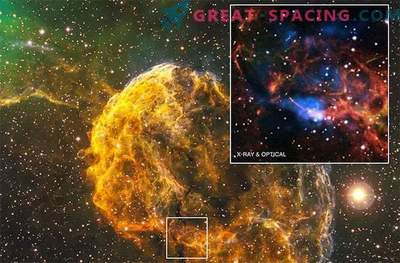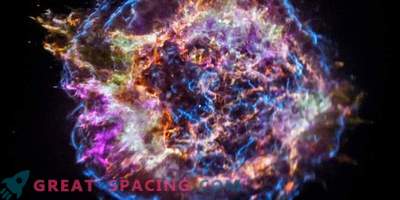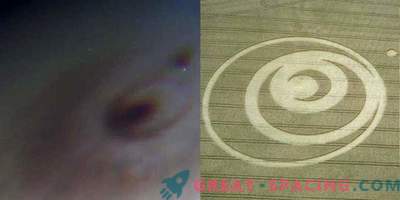
We say goodbye to the holidays, but fireworks continue in space. This photograph, which includes information from the Herschel Space Observatory, shows the remnants of a stellar explosion. G54.1 + 0.3 is the supernova remnant, that is, the remnant of a massive star that died in an explosion. It is located at a distance of 20,000 light years, living in the northern constellation of Strela.
When a star spends all the fuel, it loses the outer layers due to an explosion. At this time, under the action of gravity, the nucleus is destroyed and an incredibly dense neutron star is formed. In the specific case, we have a pulsar - a rapidly rotating neutron star, which shines brightly in the radio and X-ray parts of the electromagnetic spectrum.
Also noteworthy are the dust and gas in the surrounding shell. These layers contain silicon dioxide - the main component of many types of mountain terrestrial rocks and constituting 60% of the earth's crust. This is the first study that seeks to show that key components, like glass and sand, may appear during supernova explosions. Infrared and X-ray data collected by three space observatories and terrestrial radio observations were combined in the photograph. The information of the Herschel Observatory is marked green here and corresponds to a wavelength in the far infrared range of 70 microns. With their help, we managed to find silica in the dust envelope of the supernova remnant.
The readings of the Spitzer Space Telescope (24 microns) are marked in blue. Radio data is shown in red, and X-rays from Chandra are shown in yellow. The Herschel Observatory, working in 2009-2013, left a lot of valuable information. Study G54.1 + 0.3 is based on historical data from one of the key programs of the observatory.
